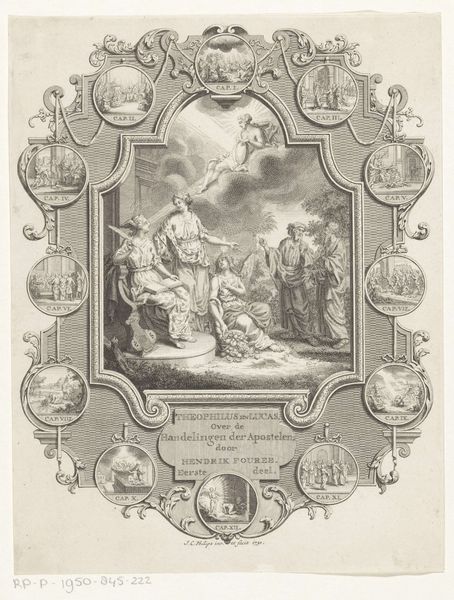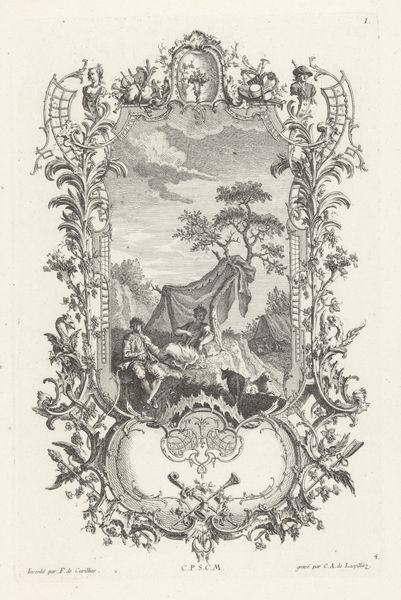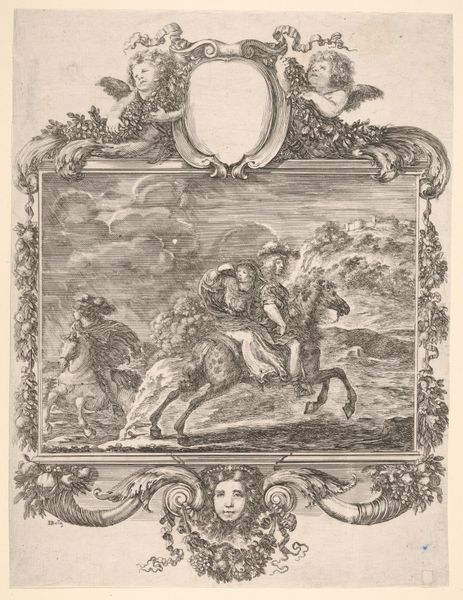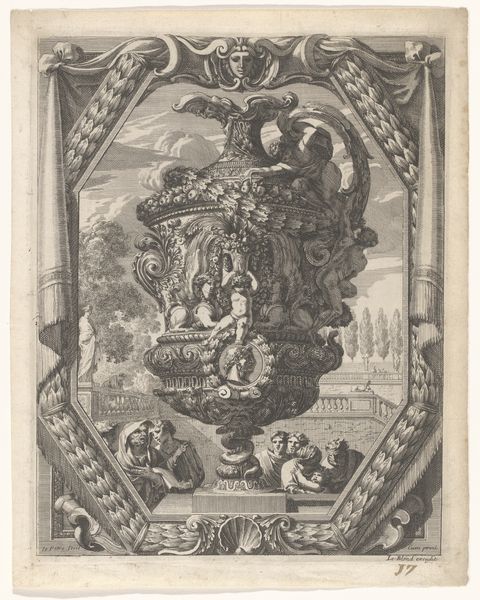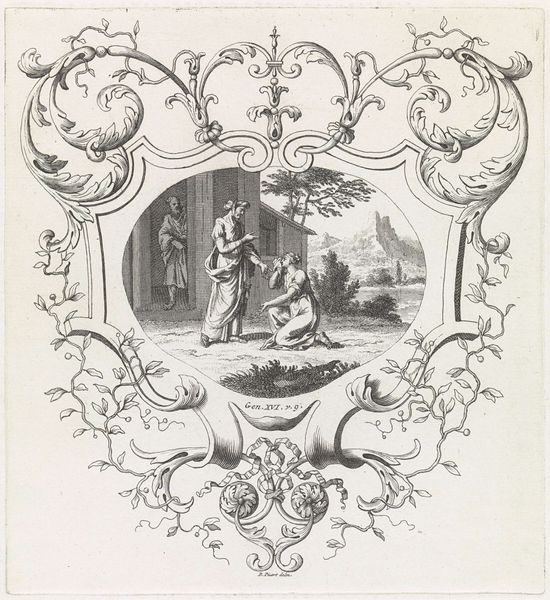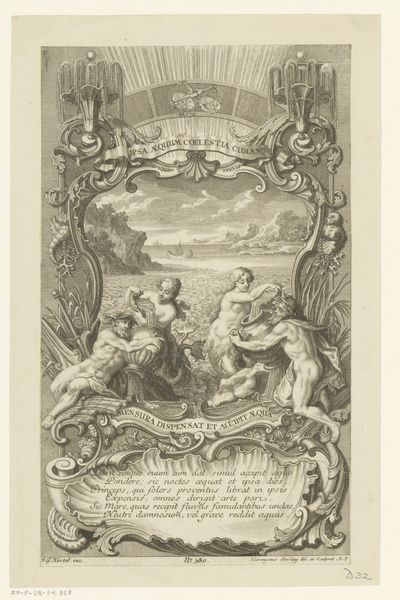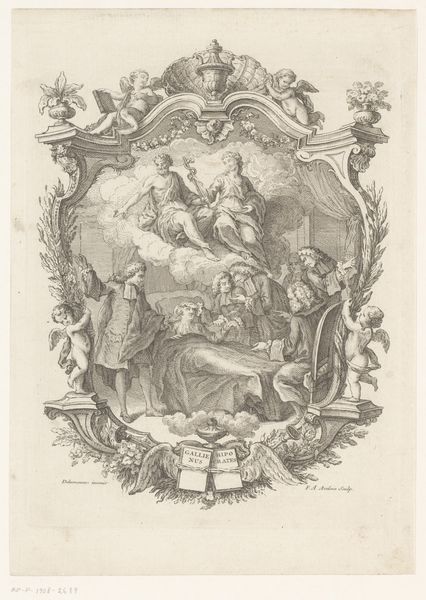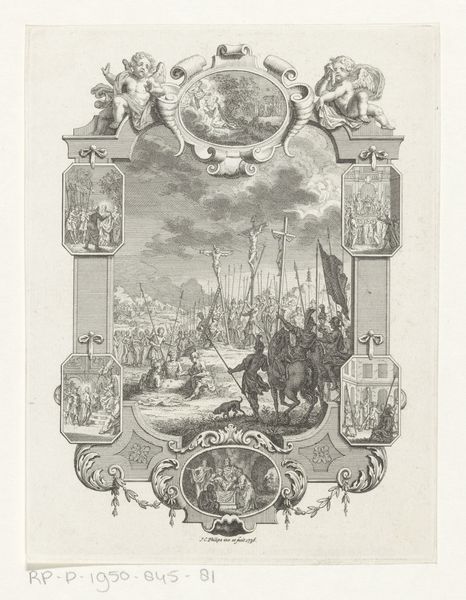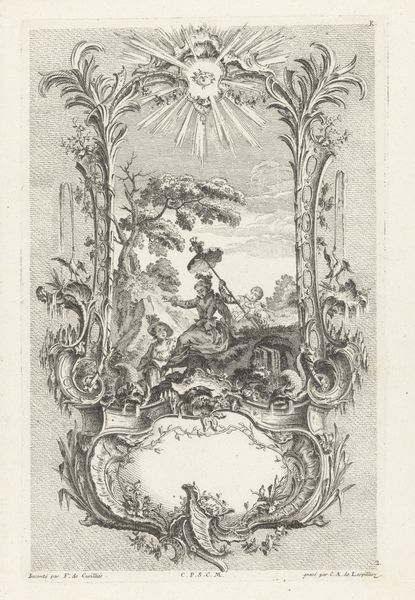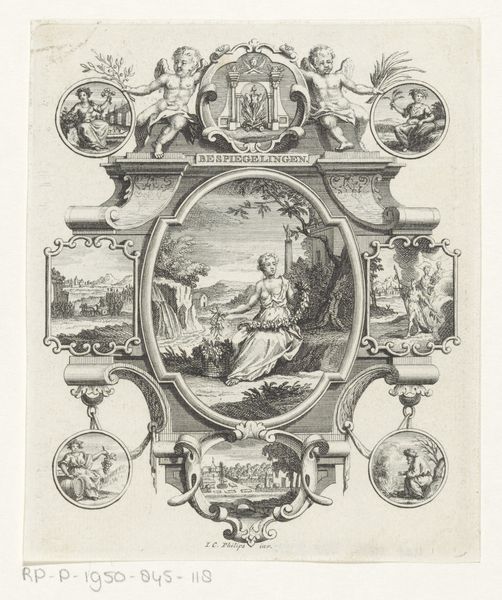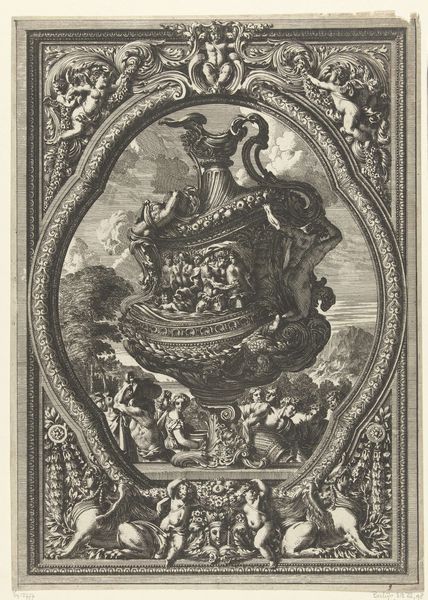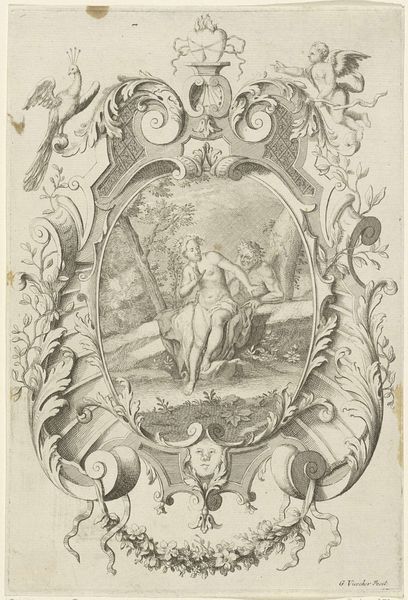
engraving
#
baroque
#
old engraving style
#
figuration
#
history-painting
#
engraving
Dimensions: height 163 mm, width 123 mm
Copyright: Rijks Museum: Open Domain
Editor: Here we have "Cartouche with the Ascension of Christ," an engraving from 1736 by Jan Caspar Philips, currently held at the Rijksmuseum. The detail is amazing! It's framed by this elaborate cartouche, and I can definitely see why it is an example of the Baroque style. What do you see in this work? Curator: This print offers a fascinating intersection of religious narrative and social context. It’s not just a depiction of Christ’s ascension; it reflects the values and power structures of the 18th century. Look at the way the witnesses below are arranged, some kneeling, some seemingly unaffected, suggesting a complex negotiation of faith and social hierarchy. The visual language uses light to define divine power, but in whose eyes, and to what end? What kind of meaning might an image like this have for diverse audiences, both then and now? Editor: That's interesting, I hadn't thought about the social commentary of religious events! The poses really do portray different societal roles. Curator: Exactly. The "history painting" tag leads to broader questions. Whose history? Whose perspective? Philips’ choice to frame the event within this elaborate cartouche transforms religious expression into something akin to a social statement. It reflects and possibly reinforces prevailing norms and expectations, suggesting that religious faith wasn’t operating in a vacuum. Do you think such displays can sometimes mask issues of equality? Editor: That's something to consider, and potentially research further. Maybe there are hidden messages of the role of religious messaging for social control in 18th century Netherlands. Curator: Precisely! Considering this engraving through a lens of power, gender, and social structures will allow a fuller engagement with this baroque work.
Comments
No comments
Be the first to comment and join the conversation on the ultimate creative platform.
